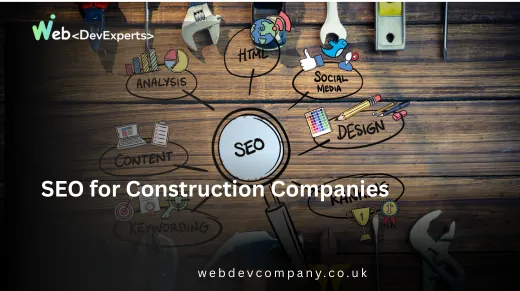Introduction
In today’s digital era, a strong online presence is no longer optional—it’s essential. For businesses in The Woodlands looking to make a mark, investing in Web Design The Woodlands services is the smartest move. But with so many options available, how do you find the best service? This article dives deep into what makes Web Design The Woodlands exceptional, the benefits it offers, and how to choose the right service for your needs.
Why is Web Design Important in The Woodlands?
The Woodlands is a bustling hub of commerce and culture. Local businesses, startups, and professionals here compete fiercely for attention—both online and offline. Your website often acts as the first impression for potential clients, so having a website that stands out is critical.
A great Web Design The Woodlands service ensures your website is not only visually appealing but also functional, user-friendly, and optimized for search engines. This combination helps attract visitors, keeps them engaged, and converts them into customers.
What Does the Best Web Design The Woodlands Service Offer?
When searching for Web Design The Woodlands services, it’s vital to understand what separates the best from the rest. Quality design services typically include:
1. Customized Website Design
No cookie-cutter templates here. The best Web Design The Woodlands companies craft unique designs tailored to your brand identity, goals, and audience.
2. Responsive and Mobile-Friendly Layouts
With more people browsing on mobile devices than ever, your website must look and perform perfectly on phones and tablets.
3. Fast Loading Speed
Visitors expect sites to load quickly. A slow website drives away traffic and hurts search rankings.
4. SEO Optimization
A visually stunning site is useless if people can’t find it. Leading services include on-page SEO to improve your site’s visibility on search engines.
5. User Experience (UX) Design
Your visitors should navigate your website effortlessly. Great UX design reduces bounce rates and increases conversions.
6. Ongoing Support and Maintenance
Websites require regular updates, security patches, and backups to stay secure and functional.
Semantically Relevant Keywords to Know
To get a better grasp of Web Design The Woodlands, here are some related terms:
- Website Development
- UI/UX Design
- Mobile Optimization
- Search Engine Optimization (SEO)
- E-commerce Web Design
- Content Management System (CMS)
- Graphic Design
- Digital Marketing
- Website Redesign
- Website Maintenance
How to Choose the Best Web Design The Woodlands Service
Choosing the right web design partner is crucial. Here’s a step-by-step guide to help you find the best Web Design The Woodlands service:
Step 1: Define Your Goals
Before you start looking, clarify what you want from your website. Are you selling products, generating leads, or building brand awareness?
Step 2: Review Portfolios
Look for companies that have experience in your industry or with the type of website you need.
Step 3: Check Reviews and Testimonials
What do past clients say about their experience? Reliable companies will have strong, positive feedback.
Step 4: Ask About Their Process
Understand how they approach web design — from initial consultation to launch and beyond.
Step 5: Discuss SEO and Mobile Responsiveness
Confirm that SEO best practices and mobile-friendly design are part of their standard offerings.
Step 6: Evaluate Pricing and Contracts
Make sure pricing is transparent and contracts don’t lock you into long terms without flexibility.
Step 7: Test Communication
Good communication is key to a smooth project. Are they responsive and clear?
Anecdote: How Web Design Transformed a Local Business
Consider Jane, owner of a boutique in The Woodlands. For years, her outdated website struggled to attract visitors. After partnering with a top Web Design The Woodlands firm, Jane’s new site featured clean design, fast speed, and clear calls to action.
Within six months, Jane saw a 50% increase in online sales and double the foot traffic in her store. Her story highlights the power of expert web design in transforming business outcomes.
Benefits of Investing in Professional Web Design The Woodlands Services
Investing in professional Web Design The Woodlands services provides many advantages:
Boosted Brand Credibility
A professionally designed website builds trust. It signals to visitors that your business is serious and reliable.
Enhanced User Engagement
Good design keeps visitors on your site longer, increasing the chance they take action—whether it’s buying, signing up, or contacting you.
Improved Search Engine Rankings
SEO-optimized design helps your site appear higher in search results, driving more organic traffic.
Increased Conversion Rates
Strategic design elements guide visitors toward your goals, turning casual browsers into paying customers.
Time and Cost Efficiency
Hiring experts means the job gets done right the first time, saving you money on costly fixes later.
Common Web Design Services Offered in The Woodlands
To help you understand what to expect, here are some common services included in Web Design The Woodlands packages:
- Custom Website Design & Development
- E-commerce Solutions
- Website Redesign and Revamping
- Mobile App Integration
- Search Engine Optimization (SEO)
- Content Management Systems (CMS) like WordPress
- Website Hosting and Security
- Graphic and Logo Design
- Website Analytics and Reporting
- Ongoing Support & Maintenance
What Makes The Woodlands Unique for Web Design?
The Woodlands offers a unique blend of businesses — from startups to established corporations, and from retail shops to professional services. This diversity means Web Design The Woodlands providers must be flexible and innovative.
Local designers understand the community’s tastes and preferences, enabling them to create websites that resonate more deeply with local audiences.
Step-by-Step Guide: Launching Your Website with Web Design The Woodlands
Ready to build your website? Follow these steps to launch your site with the best Web Design The Woodlands service:
Step 1: Initial Consultation
Discuss your business, target audience, and website goals with your design team.
Step 2: Research and Planning
The designers conduct market research and create a sitemap outlining your website’s structure.
Step 3: Design Mockups
You receive visual designs (mockups) to review and approve.
Step 4: Development Phase
Once designs are finalized, developers build the site using clean, efficient code.
Step 5: Content Creation
You work with writers or supply your own content optimized for SEO.
Step 6: Testing
The website undergoes rigorous testing on different devices and browsers.
Step 7: Launch
Your new site goes live, ready to welcome visitors.
Step 8: Maintenance and Updates
Regular updates keep your website secure and running smoothly.
Anecdote: A Startup’s Journey to Online Success
A startup in The Woodlands hired a Web Design The Woodlands company to create their first website. The team worked closely with them through every step, adapting quickly to feedback. The result? A website that not only attracted users but converted them into loyal customers. The startup credits their online success largely to expert web design.
Tips to Maximize Your Web Design Investment in The Woodlands
- Be clear about your goals from day one.
- Provide detailed feedback during design phases.
- Focus on content quality along with design.
- Keep SEO a priority throughout development.
- Ensure your website is mobile-friendly.
- Plan for future updates and scalability.
Why Choose Local Web Design Services in The Woodlands?
Local services offer several benefits:
- Better understanding of the local market.
- Easier communication and meetings.
- Faster turnaround times.
- Commitment to the community’s success.
Final Thoughts
Choosing the right Web Design The Woodlands service can transform your business, helping you build a strong, professional, and profitable online presence. Remember to prioritize customized design, SEO, mobile responsiveness, and ongoing support.
By following this guide and working with trusted professionals, you can confidently invest in your website’s future and watch your business grow.
When it comes to expert guidance and reliable service, nothing beats partnering with a Web Dev Expert who understands the unique needs of The Woodlands market.









One Response
Hello! Do you know if they make any plugins to assist with SEO?
I’m trying to get my website to rank for some
targeted keywords but I’m not seeing very good gains. If you know of any please share.
Thanks! You can read similar article here: Eco wool